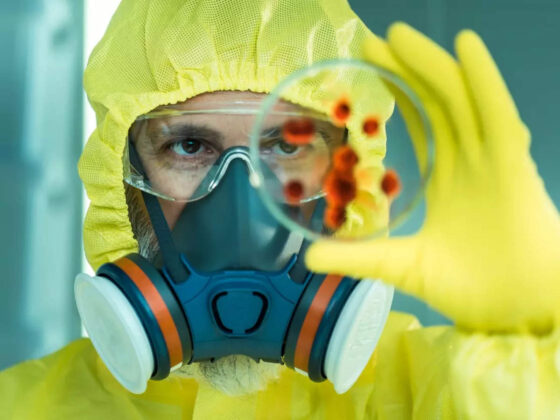As summer approaches and the allure of warm sunshine beckons us outdoors, it is crucial to understand the importance of sun protection and debunk common misconceptions surrounding the sun and its effects on our skin. While the sun offers many benefits, excessive and unprotected exposure can lead to various skin problems and increase the risk of skin cancer.
Dr. Monika, a distinguished cosmetologist and the visionary founder of Absolute Wellness, a leading medical boutique and skin clinic situated in Noida, brings her extensive expertise and experience to dispel prevalent misconceptions surrounding sun exposure. With a deep understanding of the subject matter, she highlights the paramount significance of embracing and diligently adhering to proven sun protection measures. According to her, myths associated with sun exposure are:
Myth #1: Sunscreen Is Only Necessary on Sunny Days
One of the most common misconceptions is that sunscreen is only required when the sun is shining brightly. In reality, harmful ultraviolet (UV) radiation from the sun can penetrate cloud cover and cause damage to our skin even on overcast days. It is important to incorporate sunscreen into our daily skincare routine, regardless of the weather conditions. Opt for a broad-spectrum sunscreen with an SPF of 30 or higher, and remember to reapply every two hours for optimal protection.
Myth #2: A Tan Is a Sign of Good Health
Contrary to popular belief, a tan is not a sign of healthy skin. In fact, a tan is the skin’s response to UV radiation, indicating damage to the DNA in our skin cells. Continuous exposure to UV radiation can accelerate the ageing process, leading to wrinkles, dark spots, and loss of skin elasticity. Over time, it can also contribute to the development of skin cancer. It is essential to prioritize the health of our skin over the desire for a tan and take necessary precautions to prevent excessive sun exposure.
Hypertension: How much Blood Pressure is too much Blood Pressure? | ALSO READ
Myth #3: Darker Skin Tones Don’t Need Sun Protection
Another prevalent misconception is that individuals with darker skin tones are immune to the harmful effects of the sun. While it is true that darker skin tones have more natural protection against UV radiation, it does not make them entirely invulnerable. People of all skin tones are susceptible to sunburns, sun damage, and skin cancer. The risk may vary, but sun protection is vital for everyone, regardless of their complexion.
Myth #4: Sunscreen Alone Is Sufficient for Protection
While sunscreen is an essential component of sun protection, it should not be the sole method of defence. Along with wearing sunscreen, it is advisable to seek shade during peak sun hours, typically between 10 a.m. and 4 p.m. Additionally, wearing protective clothing such as wide-brimmed hats, long sleeves, and sunglasses can provide extra protection against harmful UV rays. Combining these measures with sunscreen ensures comprehensive and effective sun protection.
Myth #5: Sun Protection Is Only Necessary for Summer
Sun protection is a year-round commitment, not limited to the summer months. UV radiation can be present throughout the year, even during winter or cloudy days. Snow, sand, and water can reflect UV rays, intensifying exposure. It is important to maintain sun protection habits consistently, regardless of the season, to safeguard our skin from the cumulative effects of UV radiation.
Understanding the truth about sun exposure and debunking prevalent myths surrounding it is crucial for maintaining healthy skin and reducing the risk of skin cancer. Remember, sunscreen is just one piece of the sun protection puzzle. Embrace a comprehensive approach that includes seeking shade, wearing protective clothing, and prioritizing sun safety in all seasons. By debunking myths and adopting sun protection habits, we can enjoy the outdoors while keeping our skin safe and radiant for years to come.











